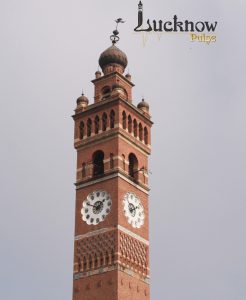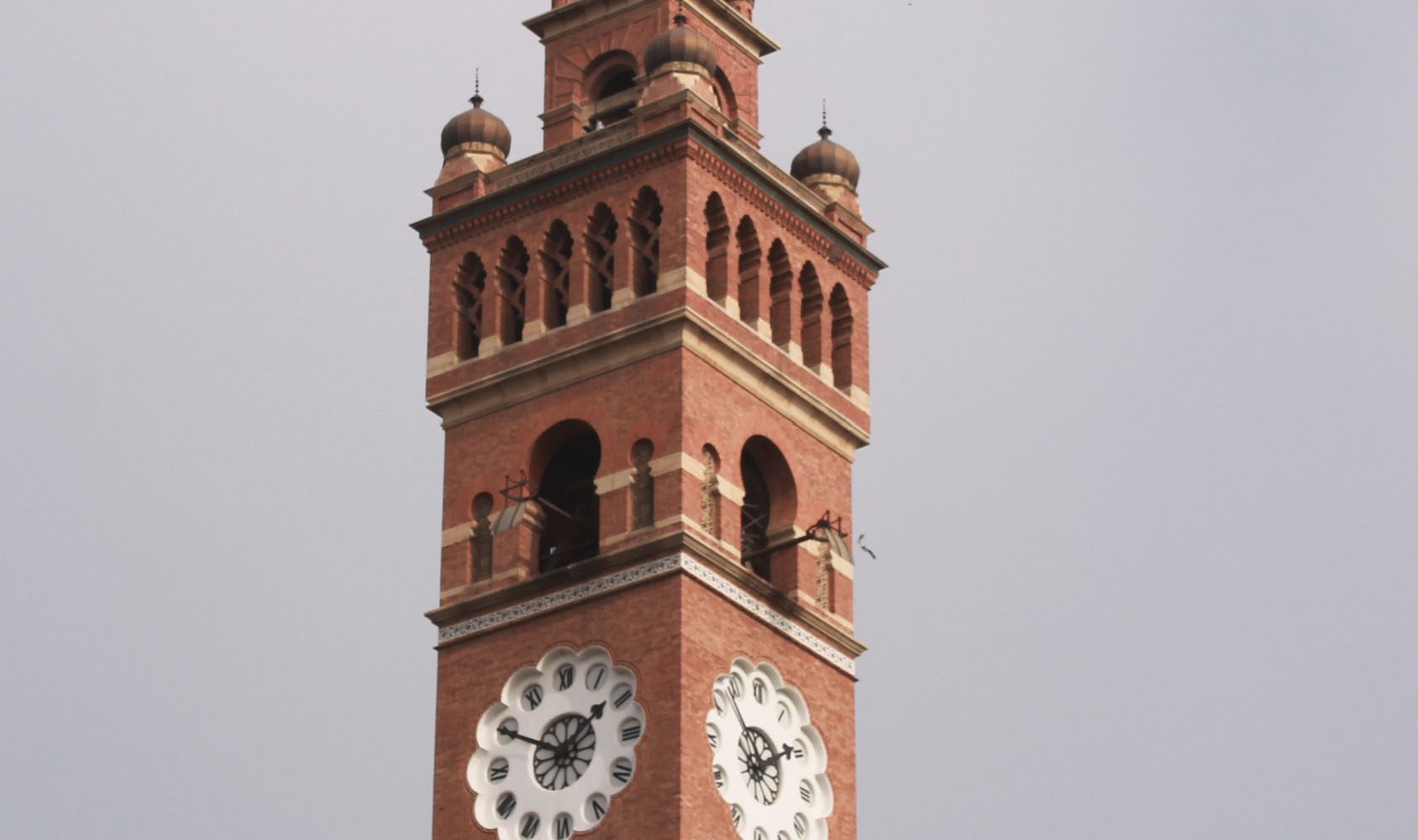The Ghanta Ghar or the Hussainabad Clock Tower is yet another piece of architectural marvel that was built by the Nawabs. Standing tall between the Chhota and the Bada Imambara, the clock tower is undoubtedly the tallest clock tower in the country. Though, in this age of wrist watches and cell phones, the clock might lost its significance but the clock tower continues to attract visitors for its sheer beauty.
History of Ghanta Ghar
Nawab Nasir-ud-din Haider conceptualized the idea of the towering clock tower (Ghanta Ghar) to commemorate the arrival of Sir George Cooper, the 1st lieutenant governor of the Awadh Province, at Lucknow.
Also called the Hussainabad Clock Tower, the Ghanta Ghar is unquestionably one of the best examples of traditional British architecture in the country. The construction of the clock tower began in 1881 and got completed in 1887. The tower is believed to have been constructed at a mammoth cost of approximately 2 lakhs during that time.
The spectacular beauty and charisma of the clock tower is comparable to the renowned Big Ben of London. In fact, it is said that the massive wheels of the clock tower are even bigger than the wheels of the Big Ben.
Majestic Architecture and Construction of Ghanta Ghar
Located in the Hussainabad area of old Lucknow, the Ghanta Ghar is the tallest clock tower in the country. The amazing tower stands tall at 221 feet and surprisingly, does not comprise any pillars for support.
The blueprint of the Ghanta Ghar was given by the renowned architect of that time, Roskell Payne. The unique square-shaped clock tower was constructed using red bricks. The tower has four clock faces. Every clock face comprises an amazing 12-petalled flower-shaped dial. The petals in every clock face symbolize the 12 hours.

According to the famous historian of Awadh, Roshan Taqui, the mechanical parts of the clocks were made up of the original gun metal in order to provide added durability. The spare parts of the clock have the ability to withstand typical Indian harsh weather conditions, which is evident from the unscathed condition of the clock over the ages. Most of its parts are supposed to have been brought from Ludgate Hill in London.
The massive clock’s design, creation, and model were completed by Mr. James William Benson, a prominent clock maker of the United Kingdom. At the top of the clock tower, you might notice a spectacular wind-vane. This wind-vane was erected at the top of a small shimmering dome and was made like a bird.
The gongs in the clock give out a melodious chime when they ring every hour to signify the time of the day. The top of the impeccably wonderful clock tower gives a bird’s eye view of the surrounding Hussainabad area with all the famous historical monuments of Lucknow located in close vicinity.
The Ghanta Ghar Today
In its early days, the Ghanta Ghar used to be surrounded by a lush green patch adorned with some beautiful flowers. Today, the Clock Tower is a picture of neglect with scribbling on its walls, filth and garbage surrounding the ill-maintained tower and lawns.
The clocks that were dysfunctional since 1984, have been brought back to life by two Lucknowites, Captain Paritosh Chauhan and a mechanical engineer, Mr. Akhilesh Agarwal. The heritage lovers took over the responsibility to restore the functioning of clocks at the Ghanta Ghar. The idea is to resurrect the old glory and magnificence of the Ghanta Ghar. The duo obtained the permission from the Hussainabad Trust, and after two years of dedication and hard work, they managed to give new lease of life to the clocks of Ghanta Ghar. The Uttar Pradesh State Government and Hussainabad Trust rendered every possible help to complete the restoration of the Ghanta Ghar.
The clock tower has withstood the tests of time. It has seen the rise and fall of empires. Now it is upon the dwellers of today to see that the tower stays up to see the resurgence of good times of the city it has stood for. The responsibility of heritage conservation now rests with everybody who connects with the Nawabi city in some way or the other while being a native, a migrant, or a traveller.



Comment here